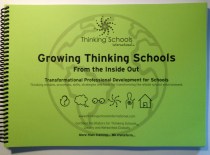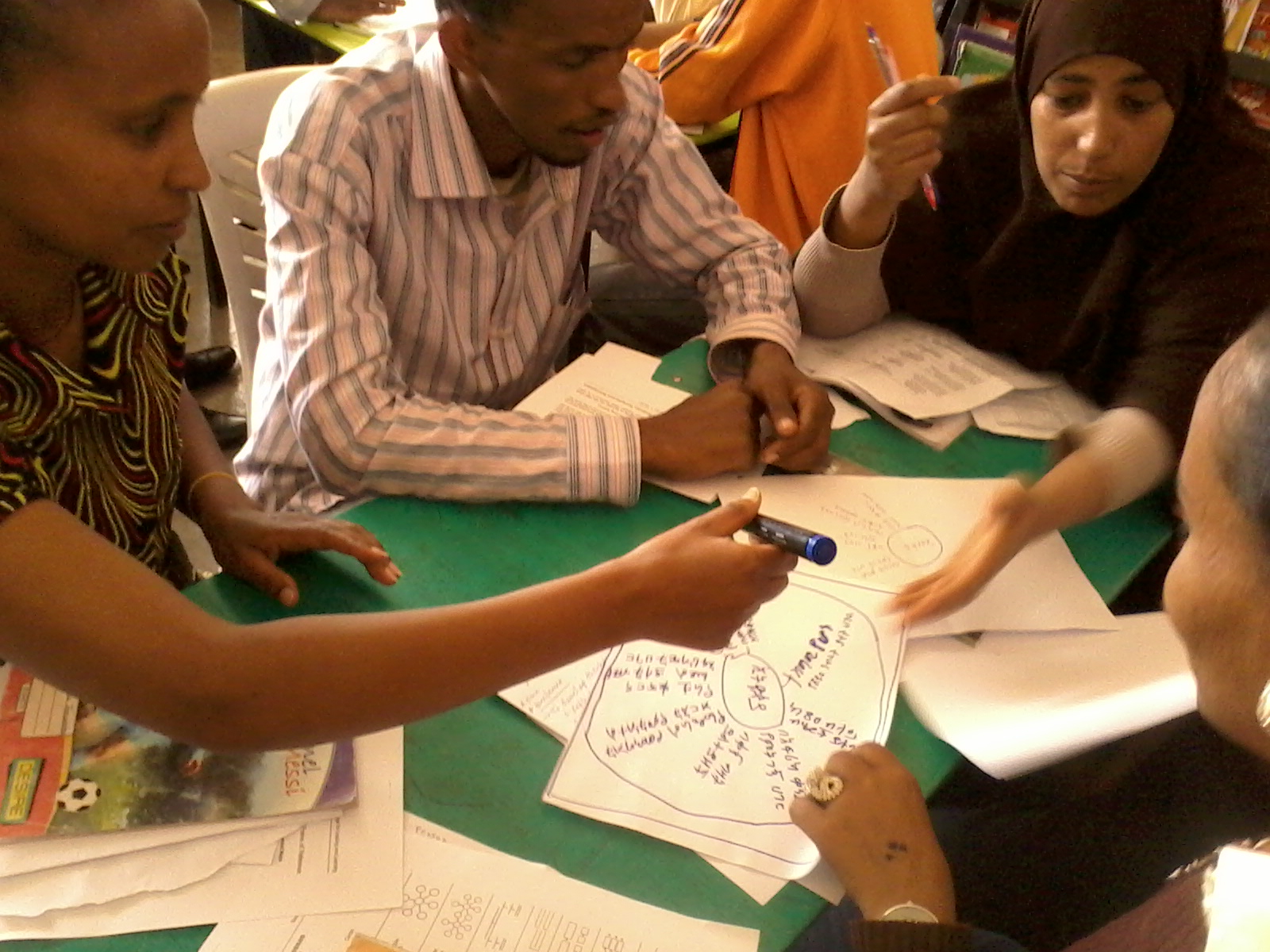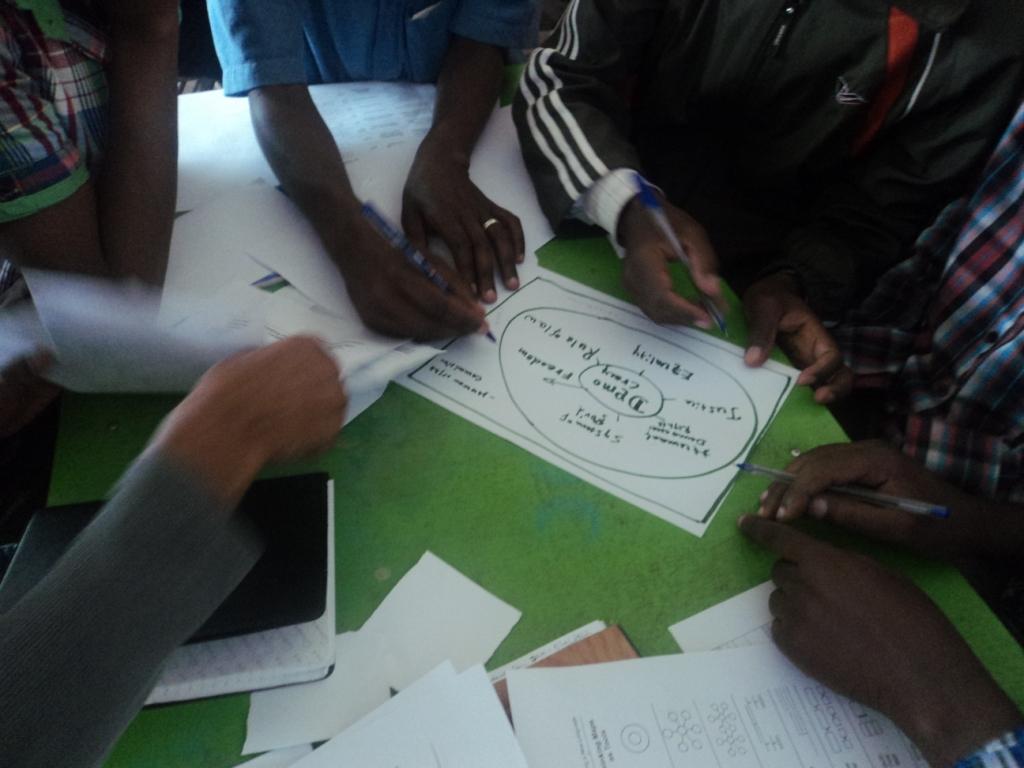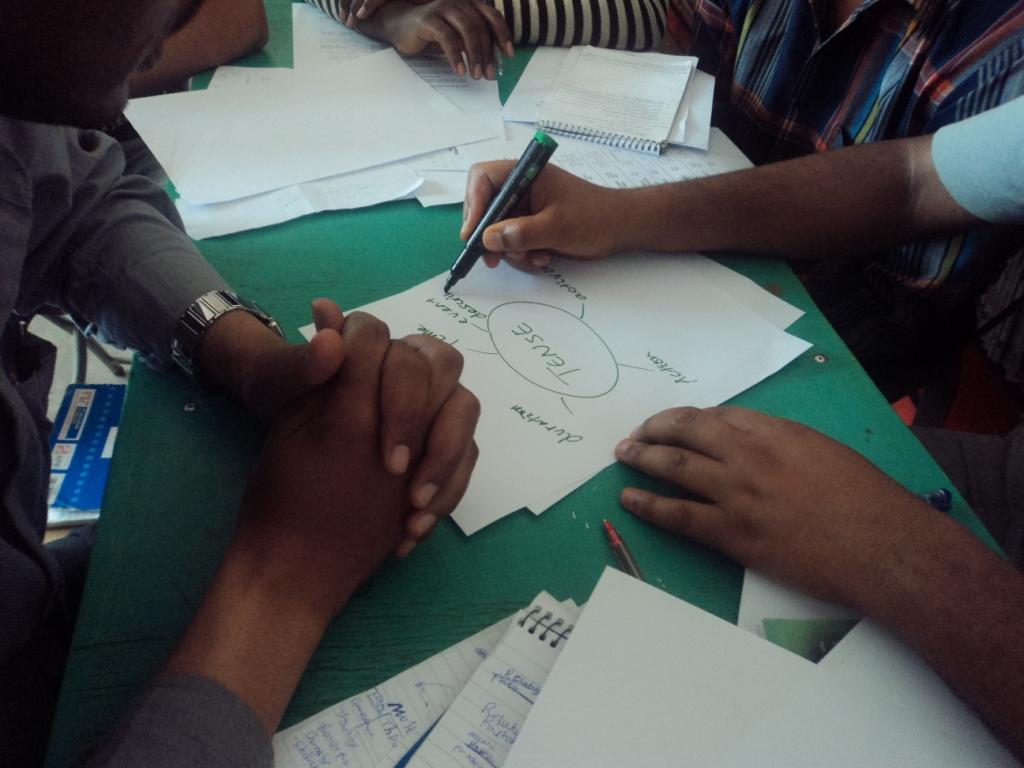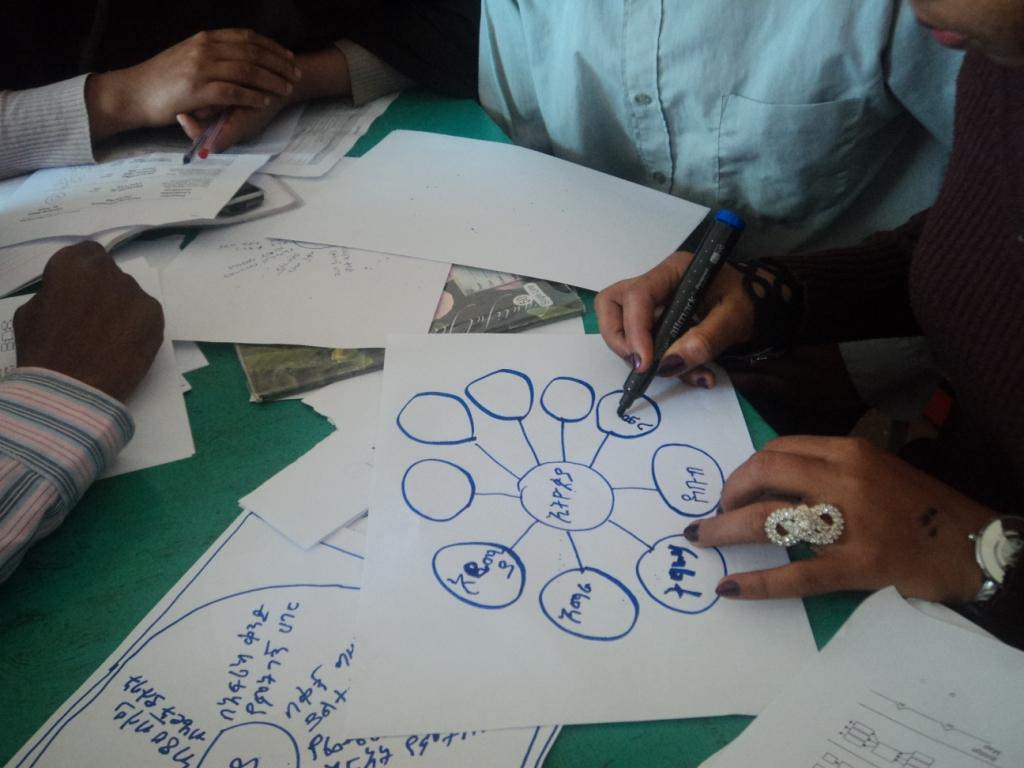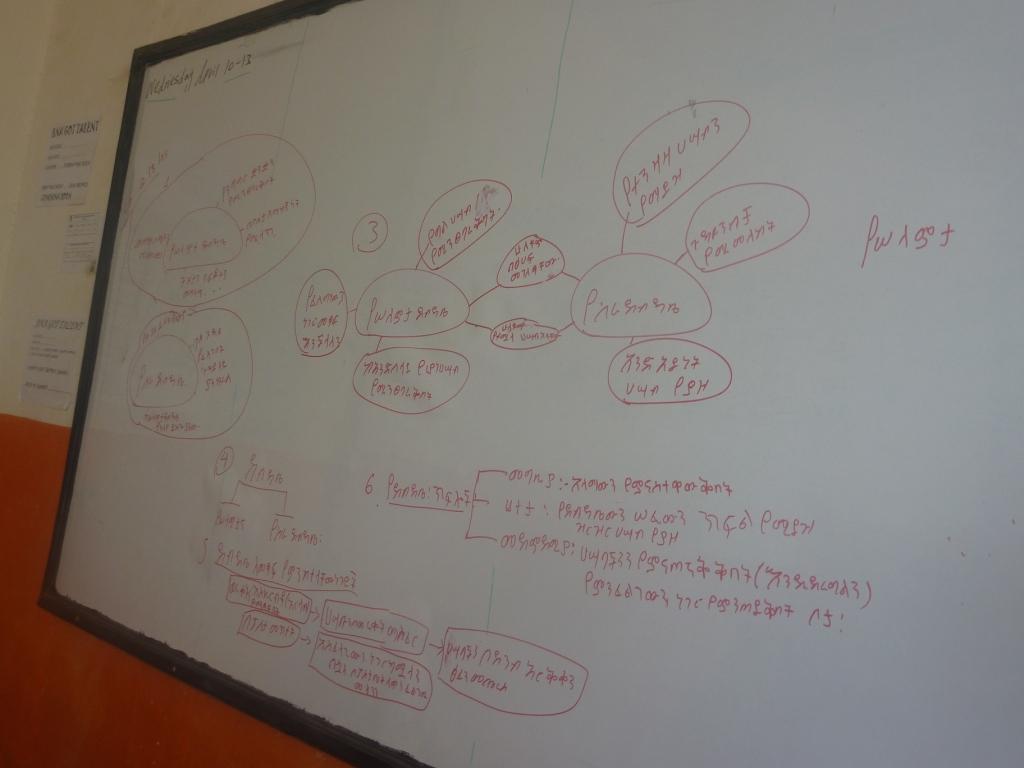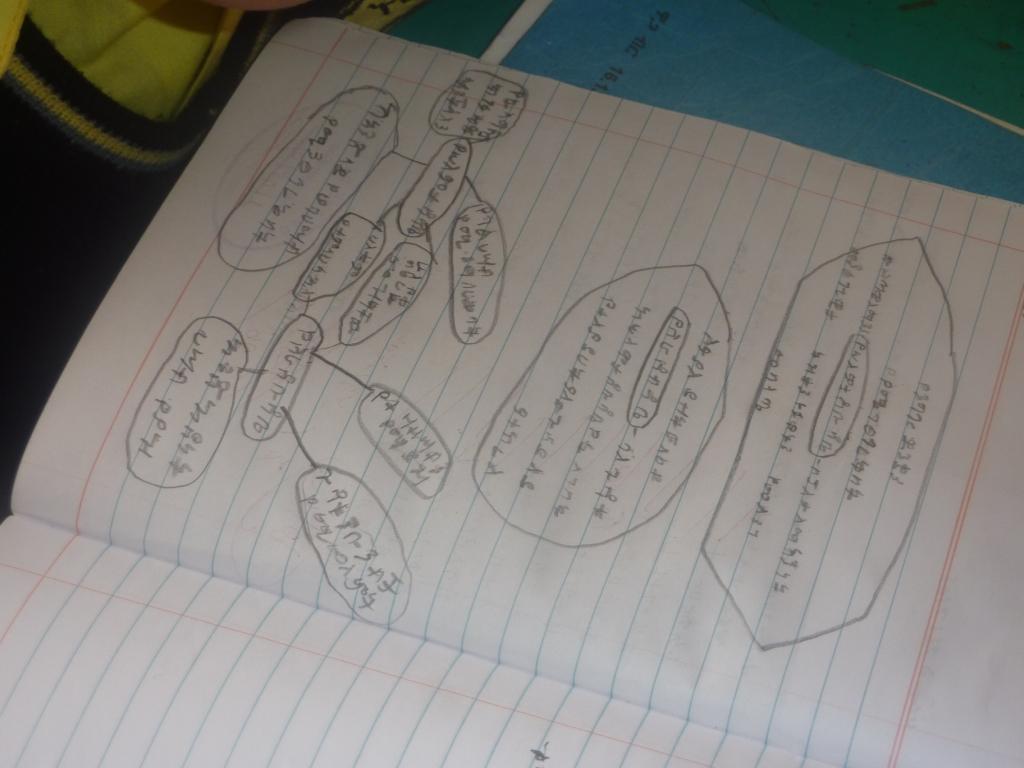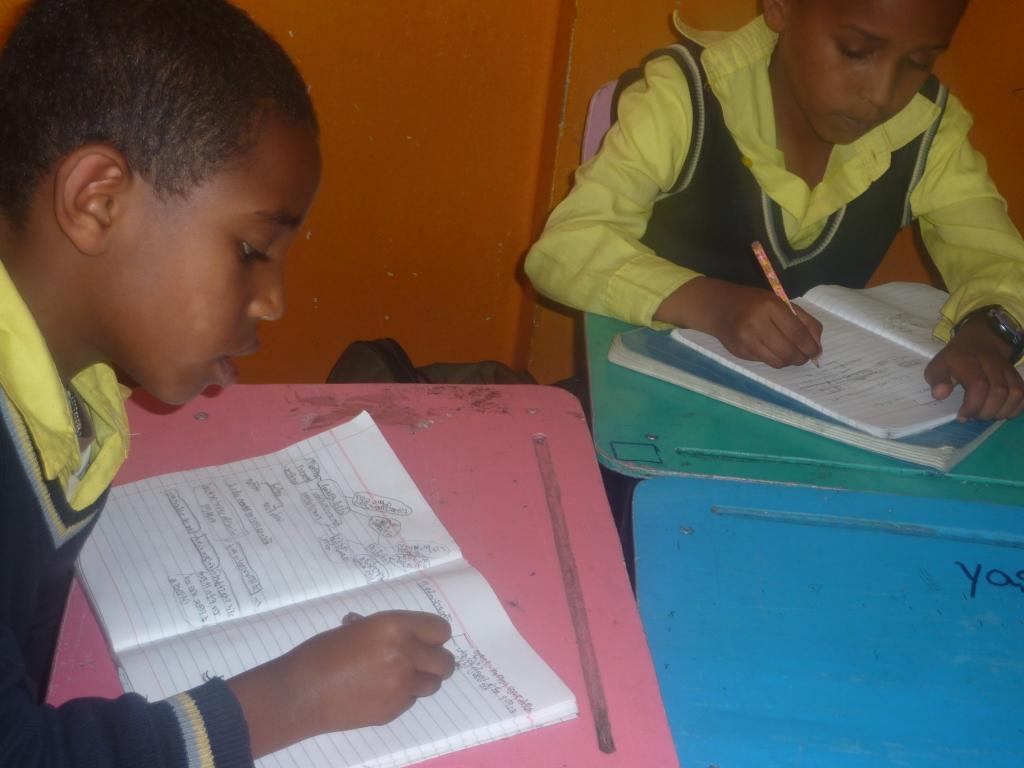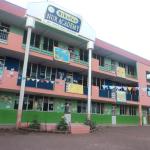Sentence Transformation for Vocabulary Development
a collaborative method to increase vocabulary, fluency and ideas
 This method was recently included as part of the leadership training with principals from 33 government schools part of the Initiative Africa All Children Read Grant. The training foundation was using the Growing Thinking Schools Inside Out handbook to provide a framework for whole school change. The 2 day hands-on session (see previous blog posting) including visual mapping (Thinking Maps®), reflective questioning, collaborative learning and structuring environment. In addition specific reading strategies, such as Sentence Transformation, were incorporated into the training.
This method was recently included as part of the leadership training with principals from 33 government schools part of the Initiative Africa All Children Read Grant. The training foundation was using the Growing Thinking Schools Inside Out handbook to provide a framework for whole school change. The 2 day hands-on session (see previous blog posting) including visual mapping (Thinking Maps®), reflective questioning, collaborative learning and structuring environment. In addition specific reading strategies, such as Sentence Transformation, were incorporated into the training.
Description Sentence Transformation for Vocabulary Development is a collaborative method to build vocabulary from prior knowledge, readings, schema connections, and peer to peer learning. Sentence Transformation models and develops reading fluency, vocabulary, parts of grammar (nouns, adjectives, adverbs, prepositions, etc.), langauge and spelling patterns and collaborative learning. This strategy is applicable for beginning readers through secondary school. The lower grades learning patterns of language, while the upper grades explore expanding on quality writing to develop vocabulary and their own voice from master writers.
download the brief handout
sentence transformation in Amharic, Oromo, English – Addis Ababa, Ethiopia – June 2013
Strengths Sentence Transformation is a process that involves the whole class and/or small groups in a very participatory activity that builds vocabulary and fluency. It requires minimal resources – a basic chalkboard and/or a wall painted with chalkboard paint is excellent to use. Students can lead the process in addition to the teacher. For the teacher it is an excellent opportunity to model reading with fluency and thinking aloud with vocabulary development.
When The process takes approximately 5-15 minutes. It is recommended doing the process 1-2 times daily. The sentence can most appropriately connect to content during the day. This method can be used in ALL content areas (language, science, math, social science, PE, etc.).
sentence transformation in English – New York City, USA – 2013
Extensions After developing vocabulary with the sentence for various parts of speech, students can extend this activity by writing sentences from the developed sentence transformation. Additionally, the vocabulary if connected to current studies and content can be used as part of a vocabulary word wall.
Needs A medium or large size chalkboard and/or white board are very effective. This provides sufficient space to write complete sentences (row) and develop a wide range of vocabulary (columns). Chalkboard paint could be used to paint an entire wall.
The Process
- the teacher writes the sentence on the chalkboard saying nothing with the students watching
- the teacher chants the sentence while tracking (pointing to) the words in phrases
- the teacher selects one part of speech (e.g. adjective) and asks for words with similar meanings
- after adding one word, the teacher chants with the students the complete sentence with each added vocabulary word
- the teacher continues with this process adding futher words to the part of speech being expanded
- Reminder—add one part of speech, then chant all the sentences so far. This supports fluency practice and learning the patterns progressively.
Students as the Facilitators (teachers)
 Having students becoming the whole class and/or small group leaders provides an opportunity to peer to peer transfer, observation of students to assess the student leaders as much as the participating students.
Having students becoming the whole class and/or small group leaders provides an opportunity to peer to peer transfer, observation of students to assess the student leaders as much as the participating students.
Teacher’s Goals of Modeling
It is important to develop students into the leaders of facilitating. It is equally important for teachers to model the procedure throughout the year — assessing student progress to determine needs and ‘changing up’ what is supportive for growth to model to the students.
Precludes, Next Steps and Extensions
The ‘word bank’ of vocabulary in context created with sentence transformation provides a natural progression to using the ‘word bank’ as a framework for writing. Prior to sentence transformation (or concurrently) visual maps can be used to develop vocabulary in a similar manner.
Connecting with Thinking Schools
Sentence Transformation is about learning patterns collaboratively and as a visual tool – the classification and expansion of the parts of language.
Thinking Schools International: www.thinkingschoolsinternational.com
Research: Thinking Foundation www.thinkingfoundation.org


